|
|
What
is Canine Freestyle ? |
What
is the difference between Canine Freestyle (Dog Dancing) and Heelwork to Music (HTM)?
Another
word for 'obedience on music' is Heelwork To Music. Canine
Freestyle is also called Dog Dance. In French it's called
Obéissance Rythmée.
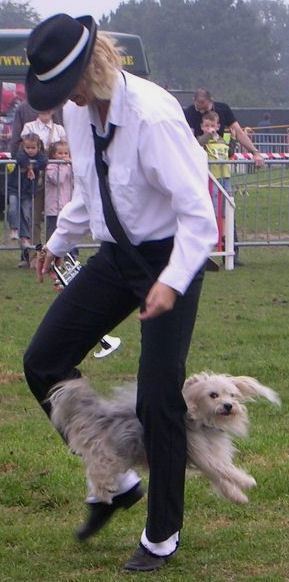 Obedience
on music is a new dog sport, developped out of the obedience
training and in 1990 put on music by Mary Ray. The purpose was
to make the obedience training more attractive to do and to
watch at and to emphasize the movements of the dog and its
handler. This way a new dog sport was born. Obedience
on music is a new dog sport, developped out of the obedience
training and in 1990 put on music by Mary Ray. The purpose was
to make the obedience training more attractive to do and to
watch at and to emphasize the movements of the dog and its
handler. This way a new dog sport was born.
The
first competitions took place a few years later en then the
sport was divided into two disciplines. Obedience to music, i.e.
the traditional exercises on music in which the dog and the
handler stay close to each other during the whole routine.
Canine Freestyle, i.e. a creative 'dance' in which the dog and
the handler make complicated figures, often based on a theme. In
both disciplines, a jury judges the unity of the dog and the
handler and the correct interpretation of the music.
How
are Canine Freestyle and Heelwork to Music (HTM)
born?
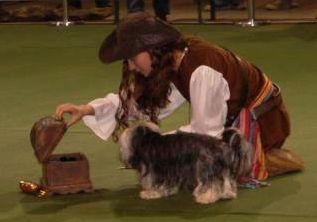 In
1989 Dawn Jecs, a dog trainer from Washington State, introduced
her unique musical training system for dogs on a large scale.
The public was very enthusiastic to see the dogs having fun
doing obedience on music. A year later, in 1990, the successful
dog trainer Mary Ray showed a demonstration of obedience on
music at Crufts, the largest English dog show. In
1989 Dawn Jecs, a dog trainer from Washington State, introduced
her unique musical training system for dogs on a large scale.
The public was very enthusiastic to see the dogs having fun
doing obedience on music. A year later, in 1990, the successful
dog trainer Mary Ray showed a demonstration of obedience on
music at Crufts, the largest English dog show.
In
1991 Tina Martin, a dressage rider, appeared in the Canadian
Vancouver with her dog in a dressage exercise at an equestrian
event. In the same year was founded in Canada the first
organisation occupied with 'Freestyle'. The breakthrough came in
America in 1995 with the foundation of the Canine Freestyle
Federation (CFF) by Joan Tennille and Alison Jaskiewicz. In 1996
the first Heelwork To Music contest was held with all 24 teams.
Around the year 1999 Dog Dance was introduced in Austria,
Switzerland, the Netherlands and Belgium. A new dog discipline
was born. Freestyle and Heelwork To Music are fun to do for dogs
and for dog owners.
Competitions?
In
Belgium, there are several clubs where you can follow Canine
Freestyle lessons. It is always fun to do exercises and to
invent tricks. During the year there are competitions where
creativity is highly praised. A dog may enter a contest when he
is one year or older, but you can already start training a dog
in a playful way when he is still a puppy. The dog may not leave
the ring (the 'dance floor') during the routine. There is
complete freedom in the choice of music and the length of the
song. It is recommanded not to choose too long songs for young
dancers because a young dog is easily distracted.
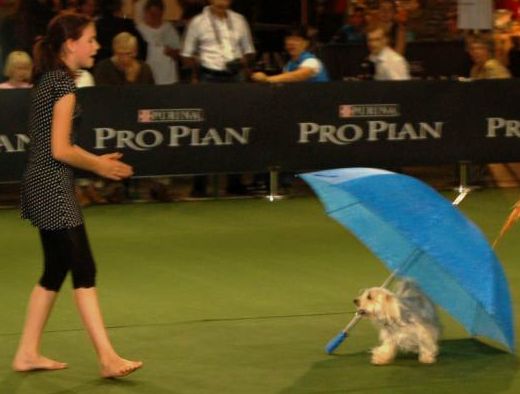 In
Belgium, there are six categories at a contest: Initiation,
Beginners, Novice, Intermediate, Advances and Innovation. A dog
who participated for the first time starts at the Initiation
class. The jury decides if you are passed or not. The dog must
know at least five different exercises and
show them well with his handler on the music. The next
competition you can enter the Beginners class . A jury judges
the tecnical and artistic side of the performance.
In this class you can use a piece of food or a toy to reward the
dog. You may not let the dog stand too long on his hind legs.
When you have 4 times an 8 (on 10 points) you have to go to the
next level (Novice), when you have twice a 9 (on 10 points) you
may pass to the next class. After the Novice class, there is the
Intermediate and Advanced class. A last class is the Innovation
class in which one or more handlers work with two or more dogs.
This is of course more difficult because you have to control
more dogs. In
Belgium, there are six categories at a contest: Initiation,
Beginners, Novice, Intermediate, Advances and Innovation. A dog
who participated for the first time starts at the Initiation
class. The jury decides if you are passed or not. The dog must
know at least five different exercises and
show them well with his handler on the music. The next
competition you can enter the Beginners class . A jury judges
the tecnical and artistic side of the performance.
In this class you can use a piece of food or a toy to reward the
dog. You may not let the dog stand too long on his hind legs.
When you have 4 times an 8 (on 10 points) you have to go to the
next level (Novice), when you have twice a 9 (on 10 points) you
may pass to the next class. After the Novice class, there is the
Intermediate and Advanced class. A last class is the Innovation
class in which one or more handlers work with two or more dogs.
This is of course more difficult because you have to control
more dogs.
To
be able to do competitions, you need a routine. You have to be
creative and practise a lot. First you have to choose a song
(free choice). Then you have to analyse the song and find
appropriate tricks to do. You may use accessories when they fit
to the song. he movements also have to fit to the music.
Creativity is very important. The jury judges the performance
and has to take into account the capacities of the breed.
How
to teach tricks?
Always
with a positive training method! We
use the clicker- and target method. We use a clicker that tells
the dog that he is doing well the exercise he is doing iwhen
it's almost or completely done. After the click with the
clicker, we reward the dog with a piece of food, or a toy or
some nice words. With the target stick you can teach the
dog certain exercises. The dog must follow the end of the target
stick for example. But you can also combine it with other
tricks.
Which
tricks?
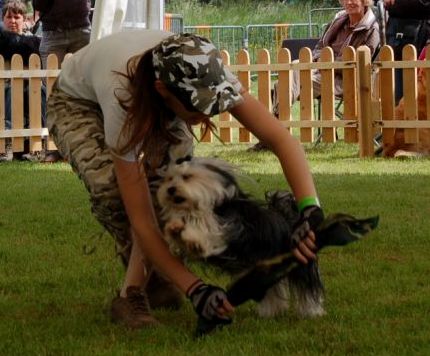 You
can teach a dog all kinds of tricks: making a circle to the left
or to the right, sitting and lying down, giving a paw, making a
slalom through your legs, rolling over, crowling, jumping
through your arms or over your legs or back, walking backwards,
saying Hi 5!, etc. There are also more advanced and complicated
exercises. You can always invent new tricks and make new
combinations. You can choose the command you want to use for
each trick. You
can teach a dog all kinds of tricks: making a circle to the left
or to the right, sitting and lying down, giving a paw, making a
slalom through your legs, rolling over, crowling, jumping
through your arms or over your legs or back, walking backwards,
saying Hi 5!, etc. There are also more advanced and complicated
exercises. You can always invent new tricks and make new
combinations. You can choose the command you want to use for
each trick.
Who
can do Canine Freestyle?
Everyone,
no matter what age you have, who loves to work with dogs and
music, can do Canine Freestyle. You can dance with every breed,
from a Chihuahua to a Great Dane, but every breed has its own
capacities and talents. Some breeds are more motivated by
nature, others are more agile to do certain exercises. But it's
always fun ...
| Our
Havanese & K9 Freestyle |
March
1, 2004 we started with Canine Freestyle with our little Maltese
Tosca at dog school G.H.B. with The Wet Nose Dancers.
In
May 2004 we welcomed a second dog, Dolce, a Havanese, and we
started learning her some tricks in a playful way. Our first
competition was just an exercise and took place on August 22,
2004. Tosca and Dolce (still a puppy) worked very well. It was a
special experience. Since then we participate regularly to
Canine Freestyle demonstrations and competitions. At home we
practise new exercises and we invent routines on music.
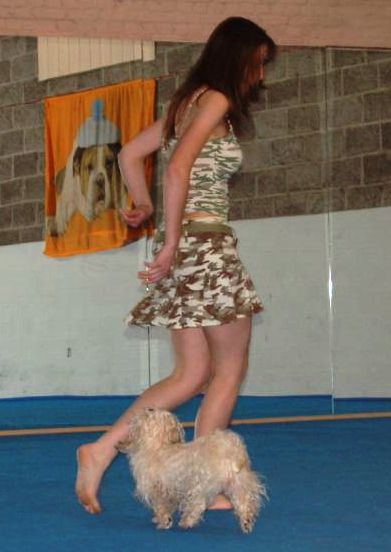 We
also teach our other Havanese, Vita, Gioia, Havana, Dalia,
Mistica, (Itala & Hope) tricks. As long as they love doing
Canine Freestyle, we will continue. It's an amazing dog sport.
You can work with dogs and be creative at the same time. We
also teach our other Havanese, Vita, Gioia, Havana, Dalia,
Mistica, (Itala & Hope) tricks. As long as they love doing
Canine Freestyle, we will continue. It's an amazing dog sport.
You can work with dogs and be creative at the same time.
We
know out of experience that Canine Freestyle is fun to do and it
strenghtens your bond with the dog!
Havanese
are companion dogs, so not real working dogs. It's difficult to
predict how they will work at competitions and demonstrations.
Though, it's always nice to 'dance' with a Havanese. You have to
adapt the exercises to the breed and its characteristics. Even
though Havanese are small dogs, they have their charms! At
contests we've had already some very good results. We are so
proud on our dogs!!
Review
of our Dog Dance routines
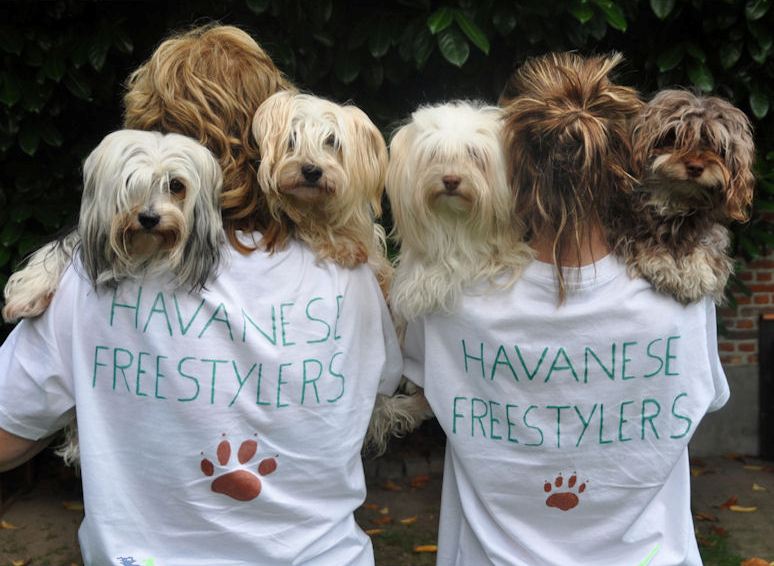
Photo
album
Dolce
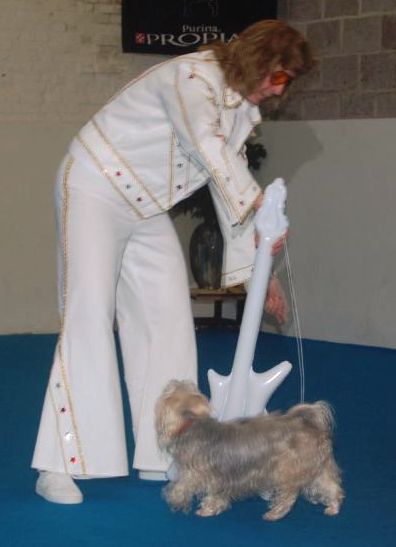
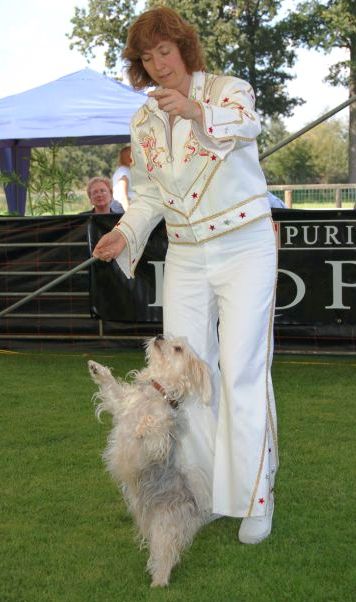
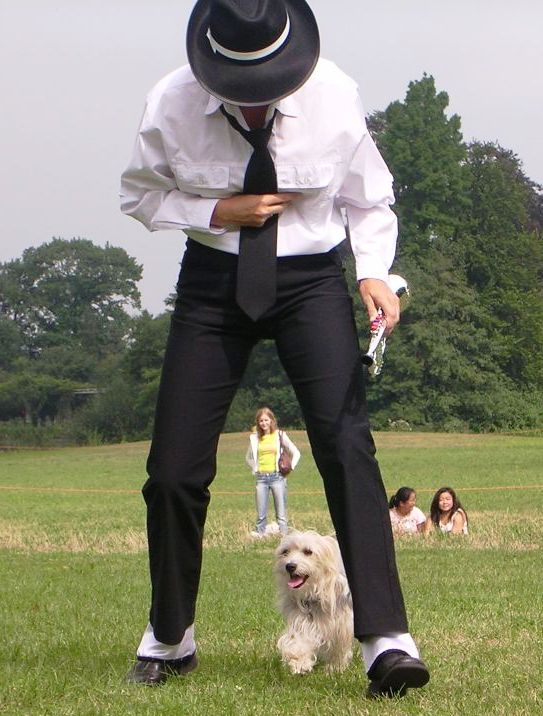
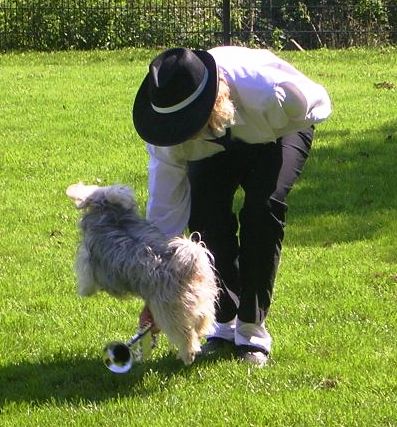
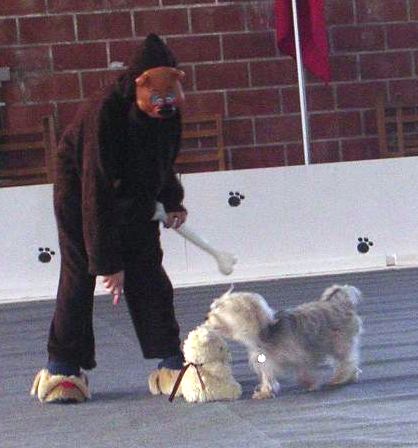
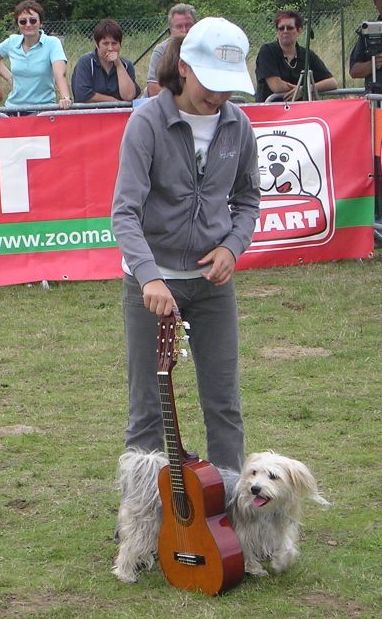
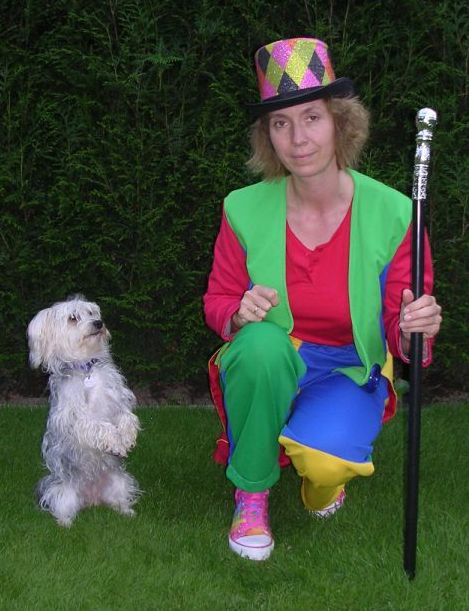
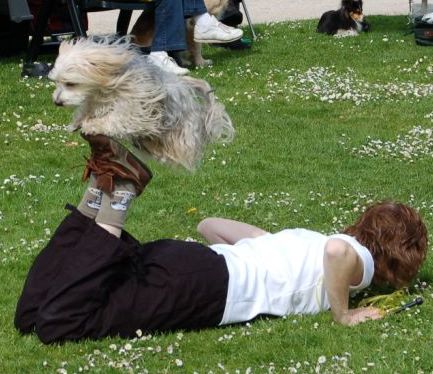
Vita
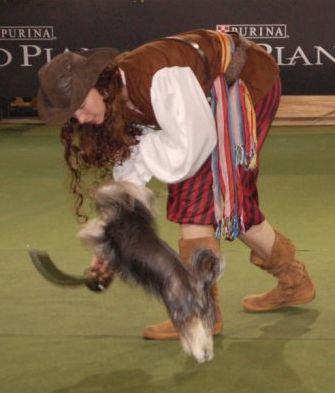
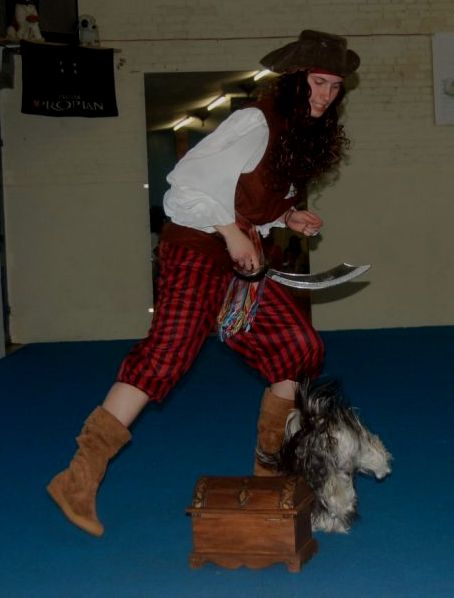
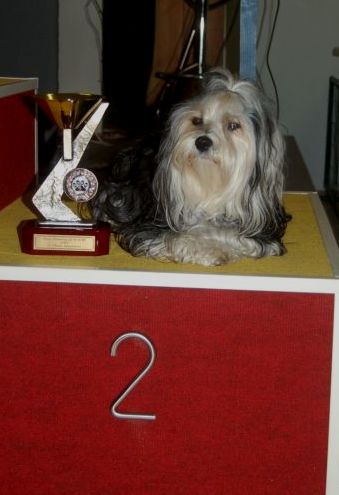
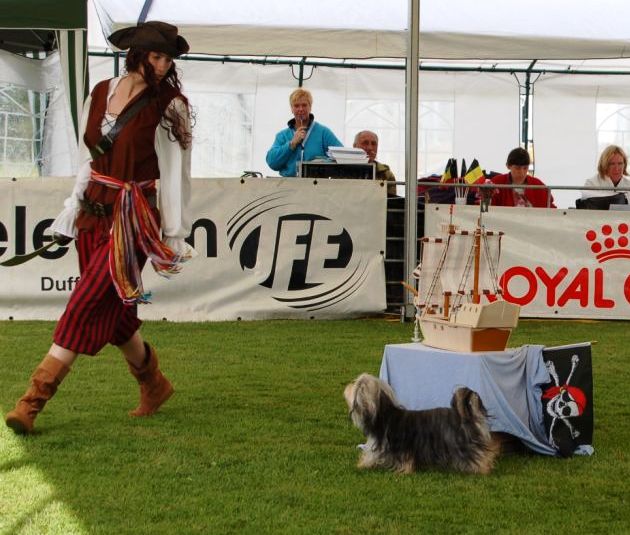
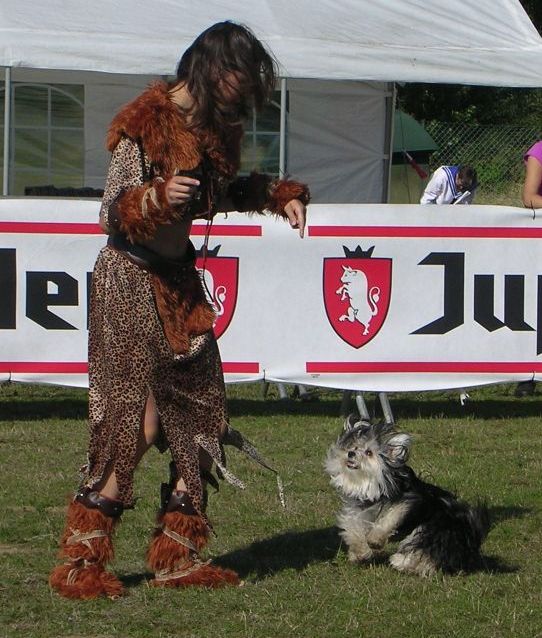
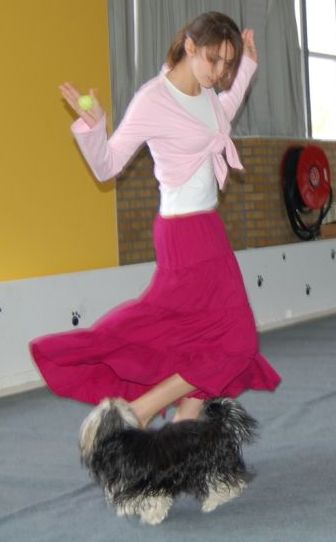
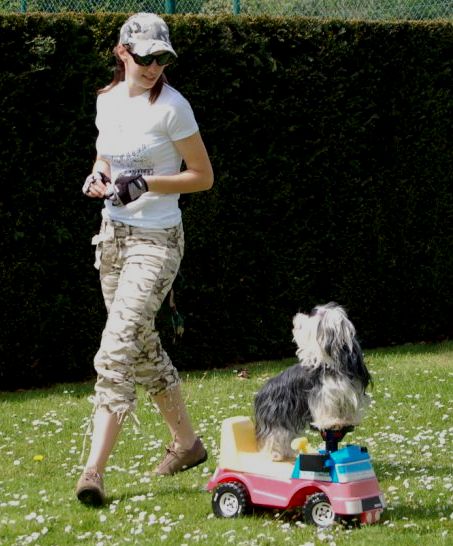
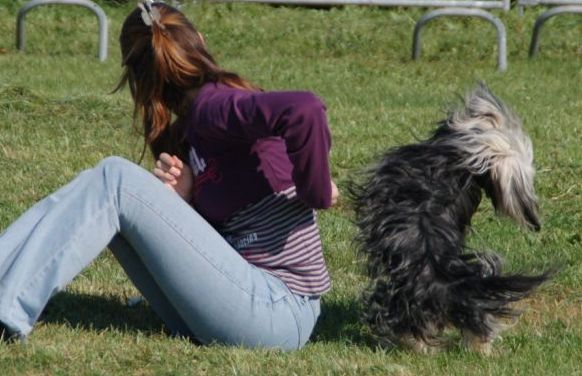
Gioia
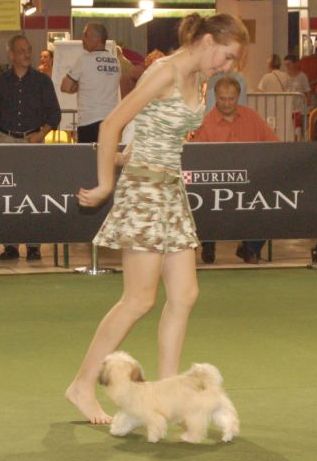
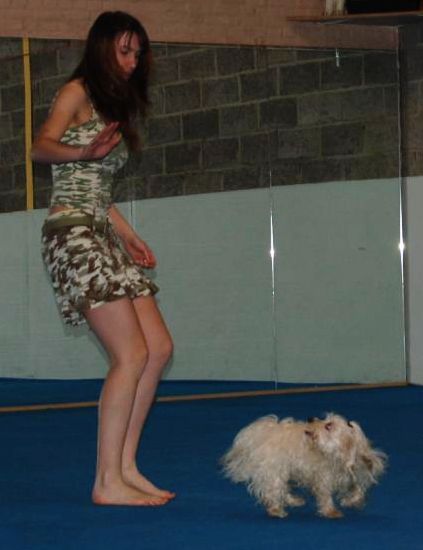
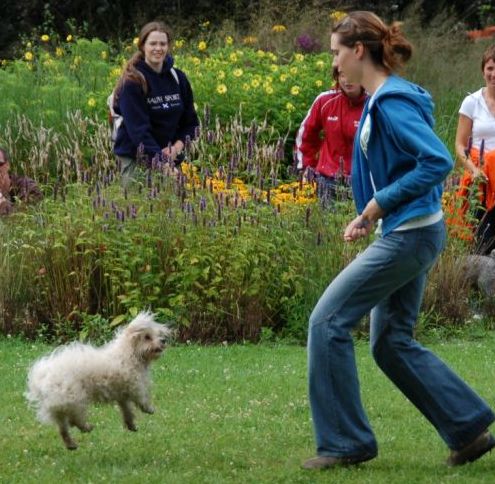
Havana
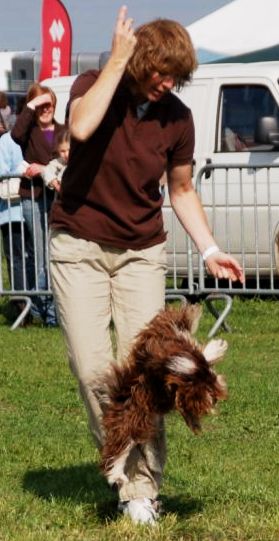
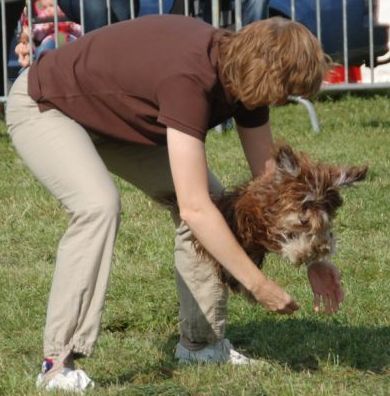
Tosca,
Dolce & Vita
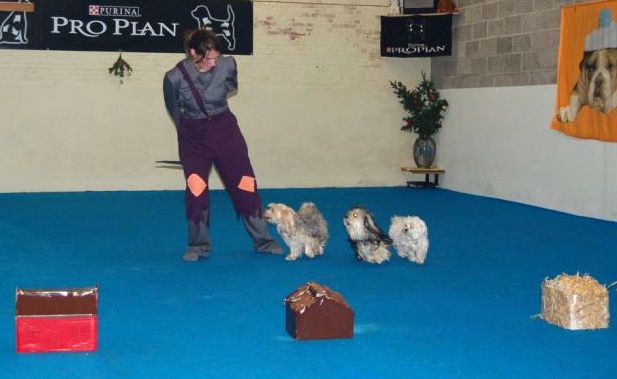
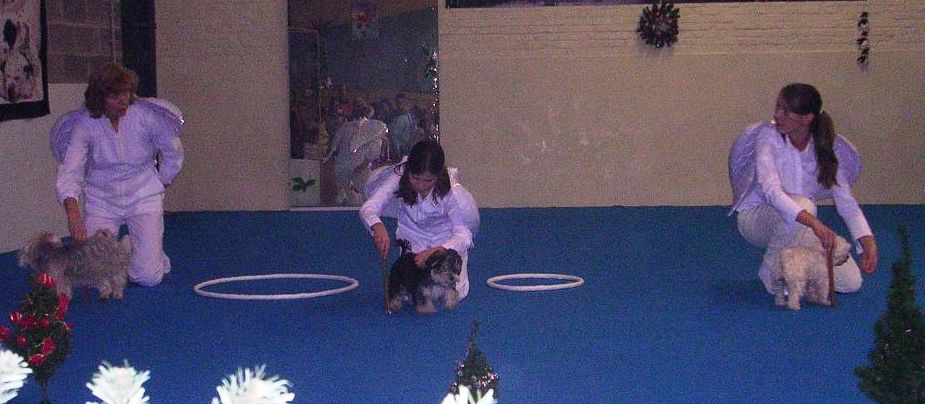
Havana
& Dalia
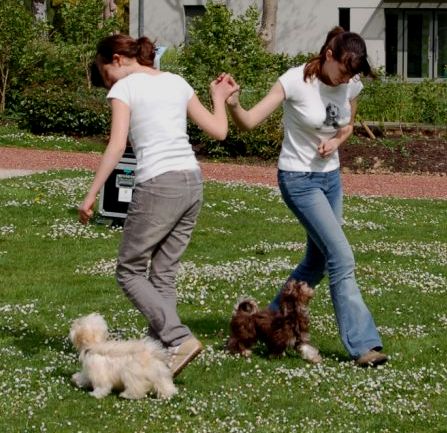
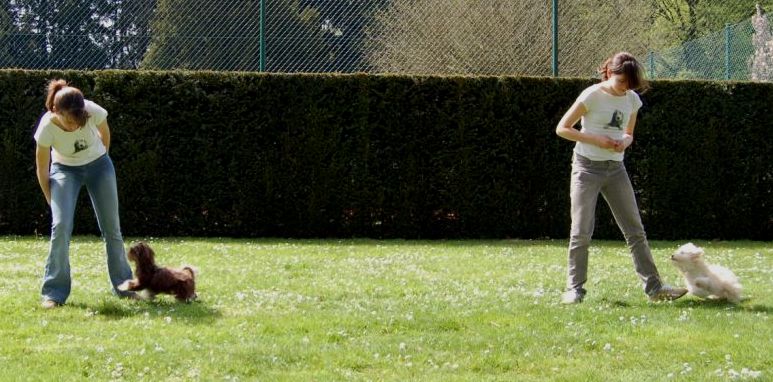
More
photos and videos of K9 Freestyle can be seen on the other part of
the site: Dog
Dance.
|